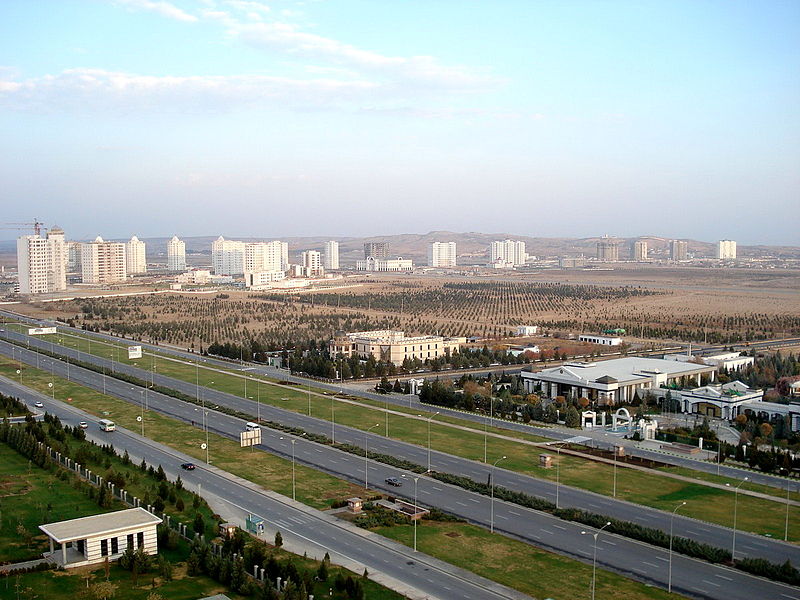This recent history of architecture and urbanism is important because it involves a key issue of our time: How should we use technology for human purposes?
Among mid-century modernists, the design centered on the technology. The dogma was that the design must be an “honest expression” of modern materials and functions—in other words, an expression of modern technology. The modernists’ designs were so striking visually that they helped spread technophilia through society.

For example, modernists designed cities around the automobile. They had faith that this new technology would improve our lives and, in any case, would inevitably dominate our lives, because you can’t stop progress. By the 1960s, it was becoming clear that the modernists’ theories had created an ugly, environmentally destructive suburban landscape of freeways, shopping malls, and auto-dependent subdivisions.

Modernists also designed individual buildings around new technology: the buildings were “honest expressions” of glass, steel, and concrete. By the 1970s, it was becoming clear that these buildings were cold, sterile and overwhelming. Serious postmodernists tried to design buildings that were attractive, comfortable places for people to be.
Yet today’s avant gardists have gone back to the sterile high-tech design of the modernists with added “artistic” touches. They often create very uncomfortable places for people to be.
The use of technology is a key issue of our time, because modern technology gives us more power and more freedom of choice than ever before.
We can use the power that technology gives us well or badly. Modern technology can be immensely beneficial; an obvious example is polio vaccination. And it can be immensely destructive; an obvious example is nuclear weapons. We need to use the beneficial technology and limit the destructive technology.
We can use the freedom of choice that technology gives us well or badly. For example, traditional agricultural societies had a limited variety of foods that they grew locally, they prepared these foods in a few conventional ways, and they lived with the constant threat of hunger. Modern societies have a greater abundance and variety of foods, which gives us much more choice about what we eat. Everywhere in the world, people can choose to eat the corn that was domesticated in the Americas, the rice that was domesticated in Asia, the wheat and barley that were domesticated in the Middle East, the spices that were domesticated in the Indies, and a vast number of other foods that originated in every corner of the world. We can use this abundance to eat a more varied and healthier diet than any society in the past, or we can use it to eat a diet that is heavy on processed food and high-fructose corn syrup, the diet that has made today’s American more obese than any society in the past.
It is easy to add similar examples. Modern technology lets us choose among a huge variety of drugs, which we can use to cure diseases or which we can abuse to feed addictions.
The same reasoning applies to architecture. Modern technology lets us choose among many different ways to build. Traditional societies were limited by the local materials and the relatively simple techniques available to them; their vernacular buildings were stylistically consistent because they did not have the choice of building in any other way. Today, we have a much greater choice of materials and of building methods. We can use this choice to design buildings and cities that are more livable than ever before, or to design buildings and cities that are more sterile and overwhelming than ever before.
The architecture establishment says we should build in styles that are “of our time” and that anyone who learns from traditional architecture is “nostalgic.” They should learn from the more sensible attitude that we have toward food. The best restaurants use locally grown, fresh ingredients because they produce healthier, tastier food. Traditional societies also used locally grown, fresh ingredients, but no one says that these restaurants are “nostalgic” and that they should use canned or frozen ingredients produced for the world market because industrial agriculture is “of our time.”
No one cares about this sort of precious esthetic criticism of food because we have very clear criteria for deciding which food are good: taste and nutritional value. The best restaurants use some new technology, such as sous vide cooking, but they use them because the food tastes better—not because they are “of our time.”
These criteria are based on human nature. Our bodies evolved to need certain nutrients. Our tastes evolved to make us enjoy food that helped our ancestors survive during the period of evolutionary adaptation. Evolution has hard-wired these needs and preferences into human nature, and chefs work to accommodate them.
Has evolution also given us preferences about the buildings that we live in and use? Are there aspects of human nature that architects should work to accommodate? We will look at this question in the next chapter.
Since the 1970s, the environmental movement has shown us that we must make a deliberate choice of technologies—for example, by choosing solar and wind power rather than coal to generate our electricity—but this movement focuses on limiting the most destructive technologies that pose grave threats to health or to the natural environment, such as global warming. Architecture and urbanism could do much more. Because they design the built environment that we live in, they could help society learn how to use modern technology in ways that are in keeping with human nature.
Our avant gardists are designing the most dehumanized buildings ever built, but their approach is not inevitable. Just as mid-century-modernist architects helped spread faith in technology and progress, today’s architects could help spread the idea that we should use modern technology for human purposes.



No comments:
Post a Comment
Note: Only a member of this blog may post a comment.